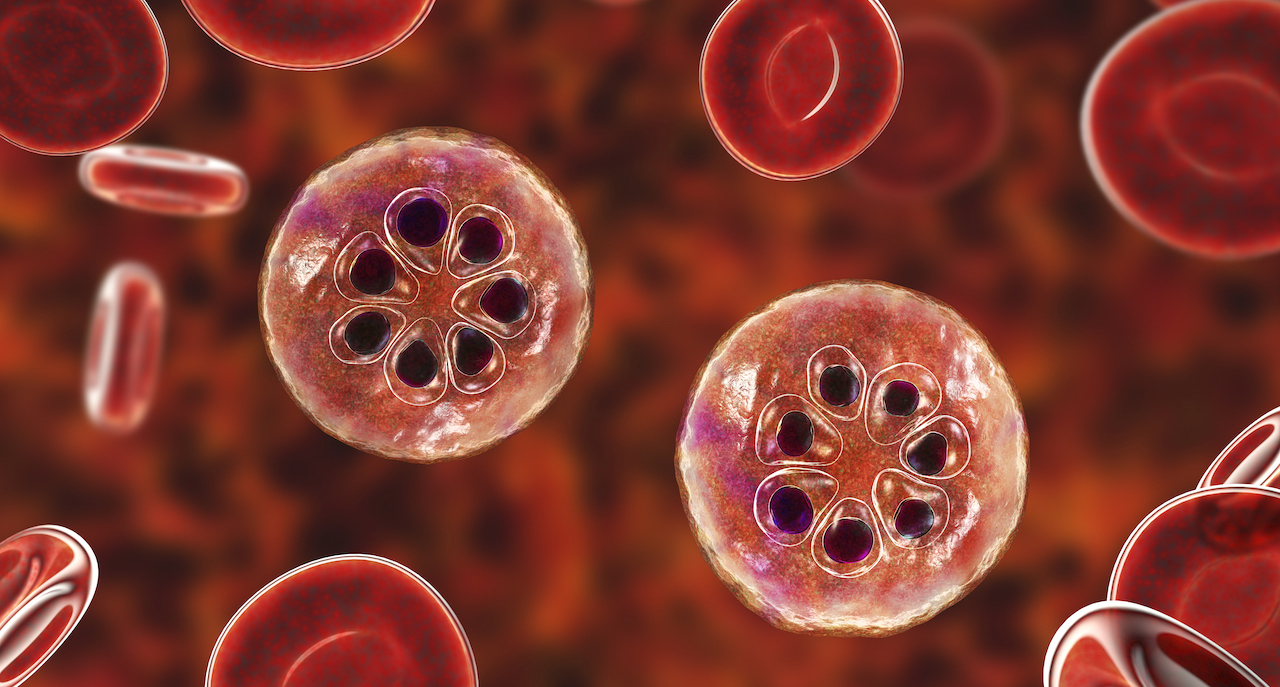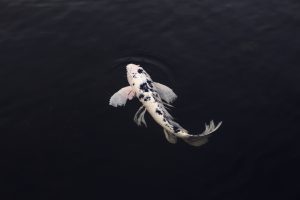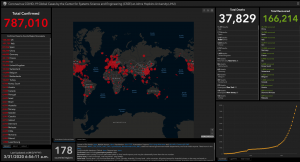Tuesday 31 March 2020

Chloroquine was once used to treat malaria-infected red blood cells. Now it is being used for Covid-19
It seems like only yesterday, but was actually many decades ago, that I was in Africa and guzzling chloroquine weekly for my antimalarial prophylaxis. Soon I had to move on to other medications, as the malaria mosquito became resistant to chloroquine and the tablet became a memory. To me, at least at that time, malaria had a mystique to it. I would often listen to the tales of those who had survived the disease.
“I was shaking so hard with fever, my bed rattled,” said one.
“My pee, it turned jet black,” said another.
I listened open-mouthed, wanting to share the experience but not wanting the disease.
Maybe it was also something to do with gin and tonic. The quinine in the tonic was said to keep malaria at bay. Quinine is a drug obtained from cinchona bark and until World War I was the only effective remedy for malaria. On the basis of its reputation I was rarely seen without a glass of something refreshing in my hand. I have since learned that it would now take 67 litres of tonic water to reach a level that might treat malaria, even assuming the mosquito was sensitive. I did not know that at the time.
I soon forgot about chloroquine, and also gin and tonic, until Covid-19 appeared. Suddenly chloroquine was back in the headlines and with World Malaria Day due on 25 April this year, I started once more to think about the disease and its treatment. It has now returned to centre stage.
On 16 March 2020, a Professor Raoult from Marseille (France) published a video on the use of two drugs, hydroxychloroquine and azithromycin, in the management of Covid-19. Hydroxycholoroquine is a derivative of chloroquine, has fewer side-effects but similar therapeutic ones. Azithromycin is an antibiotic that is widely used to treat chest infections such as pneumonia, as well as nose infections, skin infections and even some sexually transmitted diseases. Professor Raoult declared positive results in a non-randomised, unblinded trial of 24 patients. This followed a laboratory study, not involving patients, from China that concluded “hydroxychloroquine was found to be more potent than chloroquine to inhibit SARS-CoV-2 in vitro.”

Trump’s Tweet
One week later, the Marseille team published their results on 80 patients. One patient died, three were transferred to intensive care units, but 93% had a negative result for Covid-19 by day 8 of the disease. There was, however, no control arm for this study. A control arm is a group of patients who do not receive the drug combination at all. It exists basically to be sure that the results seen in the group of drug-treated patients did not occur because of chance.
Donald Trump was clearly excited by the idea and resorted to Twitter, saying:
“HYDROXYCHLOROQUINE & AZITHROMYCIN, taken together, have a real chance to be one of the biggest game changers in the history of medicine. The FDA has moved mountains – Thank You! Hopefully they will BOTH (H works better with A, International Journal of Microbial Agents) …”
These medicines are normally used for the diseases of malaria, lupus and rheumatoid arthritis, so to use them for Covid-19 is a step outside the normal. Yet if there was ever a time to take a gamble, surely this is it? Medicine is, by definition, cautious, and the European Medicines Agency (EMA) has urged patients, doctors and other medical professionals to adhere to the medicines’ authorised uses while clinical trials work out what is going on.
Despite the US President’s words, it appears that the FDA had not approved these drugs in the management of Covid-19. In addition, the comments immediately following the President’s remark were not wholly supportive:
“I know this is an emergency and we are desperate. But as a physician, I took a solemn oath to “first do no harm.” That means not testing off label drugs on human patients that may have side effects like vision and hearing loss, heart problems, and death for an unproven benefit.”
or,
“People are going to die because you are spreading unsubstantiated bullshit that a cure is around the corner.”
or,
“Hi, ER Doc here. This is a DANGEROUS combination of drugs with tons of side effects. Together they can make your heart go into abnormal rhythms and even KILL you. Please do NOT take them unless they have been prescribed by your doctor.”

Koi fish – their parasite treatment is for them, not you (Nika Akin from Pexels)
It is a sad fact that chloroquine is not always friendly. Very recently an Arizona man died after taking chloroquine phosphate. His wife also took it, but it was not the medically provided medication they ingested. They had found an ingredient listed on a parasite treatment for her koi fish and decided to give it a try. She started vomiting and her husband died shortly after admission to hospital. It was not a good outcome.
A study has recently come out of Wuhan, which looked at 62 patients that were admitted to one hospital over a period of slightly less than three weeks. Hydroxychloroquine was given to 31 of them and it was found that those who did receive it recovered quicker, and none of them developed severe disease. This study also showed that none of the patients who took hydroxychloroquine for lupus developed Covid-19.
Very recently an overview paper, what the academics call a systematic review, has been published from India. This looked at 19 publications that reported on chloroquine or hydroxychloroquine in the treatment of Covid-19. It concluded there was indeed sufficient evidence to support the use of one or the other, but that more data were required.
So, watch that space for hydroxychloroquine and azithromycin, and do not be surprised, should you end up in hospital, if the medics give them a try. There may just be a benefit.
Meanwhile, there are questions presently being asked about the sweeping powers being invoked by leaders right around the world, and in record time, in order to deal with Covid-19. The UK police are being challenged about their inconsistent approach to the contraventions of social distancing they have encountered. As best I can tell, in some places you are thwacked around the head with a modern-day truncheon, in others you are spoken to gently and in yet others you receive a wink and a smile. The police have now been issued guidanceand told to be consistent in how they react. For some reason, the use of drones to film walkers in the Peak District National Park when they should have been self-isolating was not regarded as fair play. I am struggling to understand why.

The situation this morning – 31 March 2020 (courtesy Center for Systems Science and Engineering at Johns Hopkins University)
Unhappy times continue, with UK deaths rising by 393 in one day. This is the biggest daily rise to-date and unlikely to remain a record for long. Even so, and to put this in perspective, Spain recorded 849 deaths in the same period. As far as the UK economy is concerned, it has certainly seen better days. The World Bank, a master of understatement, has declared that “significant economic pain seems unavoidable.”
I am no economist, but I do not need the World Bank to tell me the blindingly obvious. My bank account these days is permanently coloured red.
